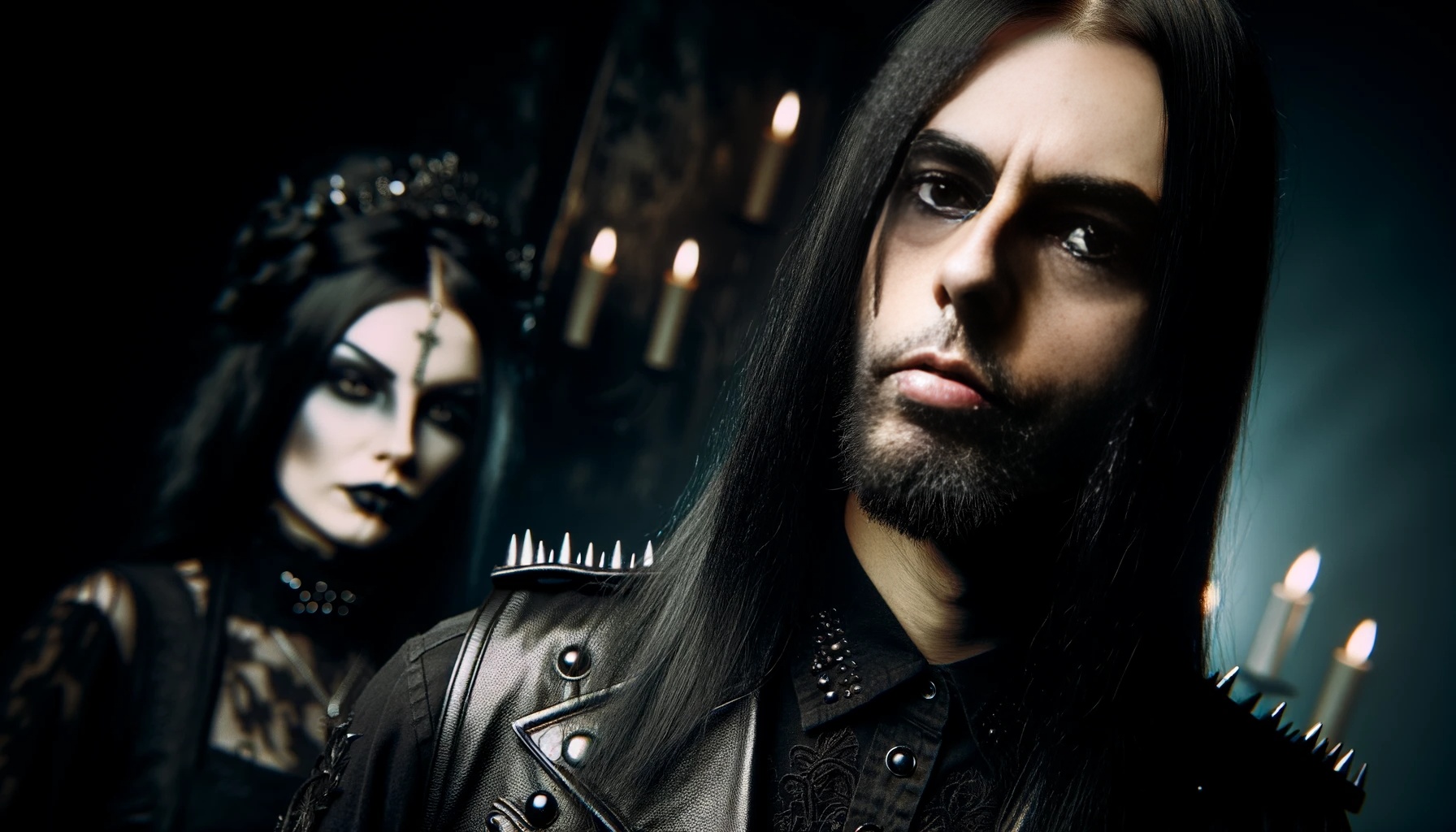Sexual Liberation and Rebellion: In the realm of music and subculture, few movements have been as misunderstood and stigmatized as metal and goth. Often seen as dark, rebellious, and deviant, these communities are more than just a collection of aesthetic choices and musical preferences—they are vibrant cultures that challenge societal norms, especially regarding sexuality and personal freedom. Welcome to an exploration of how metal and goth subcultures champion sexual liberation and rebellion against conventional norms.

The Roots of Rebellion
Metal and goth subcultures emerged from a backdrop of societal upheaval and musical evolution. Metal, with its aggressive sound and often provocative lyrics, grew from the rebellious spirit of rock and punk. Goth, on the other hand, with its dark, romantic aesthetic and introspective themes, evolved from post-punk music in the late 1970s and early 1980s.
Both subcultures are rooted in a defiance of mainstream expectations. This defiance is not just limited to music; it permeates every aspect of the lifestyles of those who identify with these movements. From fashion to philosophy, metal and goth are about breaking free from societal constraints and embracing individuality.

Sexual Liberation in Metal and Goth
Embracing Individuality and Non-Conformity
At the heart of metal and goth subcultures is a celebration of individuality. This ethos naturally extends to expressions of sexuality. In a world where conformity is often enforced, both subcultures offer a safe haven for those who do not fit into conventional molds. Metal and goth communities are inclusive spaces where diverse sexual identities and preferences are not only accepted but celebrated.
Challenging Gender Norms
Metal and goth subcultures have a long history of challenging traditional gender roles. Artists and fans alike often adopt androgynous looks, blending masculine and feminine elements in ways that defy societal expectations. This fluidity in gender expression allows for a more expansive understanding of identity and encourages the breaking down of rigid gender binaries.
For instance, goth fashion frequently incorporates elements traditionally associated with both genders. Men in corsets and makeup, women in combat boots and leather—these are common sights at goth clubs and metal concerts. This blending of genders promotes a more inclusive view of sexuality, where individuals are free to express themselves without fear of judgment.
Sexual Expression and Freedom
Metal and goth subcultures promote a liberated approach to sexuality. This can be seen in the provocative lyrics of many metal bands, which often address themes of desire, lust, and eroticism. Goth culture, with its emphasis on the darker, more mysterious aspects of life, also delves deeply into themes of love, passion, and sexuality.
The imagery associated with both subcultures often includes elements of BDSM, fetish wear, and other forms of sexual expression that challenge mainstream norms. This open-minded approach fosters a culture where individuals feel empowered to explore and express their sexual identities without shame or restriction.

Icons of Sexual Liberation in Metal and Goth
Marilyn Manson: Provocateur and Boundary Breaker
One of the most iconic figures in the intersection of metal, goth, and sexual liberation is Marilyn Manson. Known for his shocking performances and provocative imagery, Manson has consistently challenged societal norms around gender, sexuality, and identity. His androgynous appearance and fearless exploration of taboo subjects have made him a symbol of rebellion and sexual freedom.
Siouxsie Sioux: Goth Pioneer and Feminist Icon
Siouxsie Sioux, the lead singer of Siouxsie and the Banshees, is another key figure in the goth movement. Her bold fashion choices and unapologetic attitude toward sexuality have inspired countless fans. Siouxsie’s work often addresses themes of empowerment and defiance, making her a powerful icon for sexual liberation within the goth community.

The Role of Fashion in Sexual Liberation
Fashion plays a crucial role in both metal and goth subcultures, serving as a powerful tool for self-expression and rebellion. The aesthetic choices of these communities often involve elements that are provocative and unconventional, challenging mainstream ideas of beauty and sexuality.
Metal Fashion: Aggression and Empowerment
Metal fashion is characterized by its aggressive and bold style. Leather, spikes, and band tees are staples, reflecting the raw energy and defiance of the genre. This look is not just about aesthetics; it’s a statement of power and resistance. For many, wearing metal fashion is an act of reclaiming one’s body and rejecting societal expectations.
Goth Fashion: Elegance and Mystery
Goth fashion, with its emphasis on dark, romantic elements, offers a different but equally powerful form of sexual expression. Corsets, lace, velvet, and dramatic makeup create an aura of mystery and allure. This aesthetic allows individuals to explore and express their sexuality in a way that feels authentic and empowering.

Community and Acceptance
One of the most significant aspects of metal and goth subcultures is the sense of community and acceptance they offer. These subcultures provide a refuge for those who feel marginalized or misunderstood by mainstream society. In metal and goth communities, individuals can find a sense of belonging and support that is often lacking elsewhere.
Safe Spaces for Exploration
Metal and goth events, such as concerts, clubs, and festivals, are safe spaces where individuals can express themselves freely. These gatherings are inclusive environments where diversity in appearance, identity, and sexuality is not only accepted but celebrated. This sense of community fosters an environment where people can explore their identities without fear of judgment or rejection.
Online Communities and Support Networks
In addition to physical spaces, metal and goth subcultures thrive online. Social media platforms, forums, and websites dedicated to these subcultures provide additional support and connection. These online communities are vital for those who may not have access to local scenes, offering a space to share experiences, seek advice, and find solidarity.

Conclusion: The Power of Sexual Liberation and Rebellion
Metal and goth subcultures are powerful forces of sexual liberation and rebellion against societal norms. Through their music, fashion, and community, they challenge conventional ideas of gender, sexuality, and identity. For those who identify with these subcultures, metal and goth offer a path to self-discovery and empowerment, providing the freedom to explore and express one’s true self.
If you’re intrigued by the intersections of metal, goth, and sexuality, explore more in-depth discussions and personal experiences in my section. To stay updated with my latest musings and insights, connect with me on social media. Join the conversation and embrace the freedom that comes with challenging norms and celebrating individuality.




